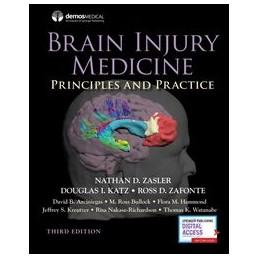- Obniżka


 Dostawa
Dostawa
Wybierz Paczkomat Inpost, Orlen Paczkę, DPD lub Pocztę Polską. Kliknij po więcej szczegółów
 Płatność
Płatność
Zapłać szybkim przelewem, kartą płatniczą lub za pobraniem. Kliknij po więcej szczegółów
 Zwroty
Zwroty
Jeżeli jesteś konsumentem możesz zwrócić towar w ciągu 14 dni. Kliknij po więcej szczegółów
Written by over 200 experts from all involved disciplines, the text runs the full gamut of practice of brain injury medicine including principles of public health and research, biomechanics and neural recovery, neuroimaging and neurodiagnostic testing, sport and military, prognosis and outcome, acute care, treatment of special populations, neurologic and other medical complications post-injury, motor and musculoskeletal problems, post-trauma pain disorders, cognitive and behavioral problems, functional mobility, neuropharmacology and alternative treatments, community reentry, and medicolegal and ethical issues. Unique in its scope of topics relevant to professionals working with patients with brain injury, this third edition offers the most complete and contemporary review of clinical practice standards in the field.
Key Features::
Opis
